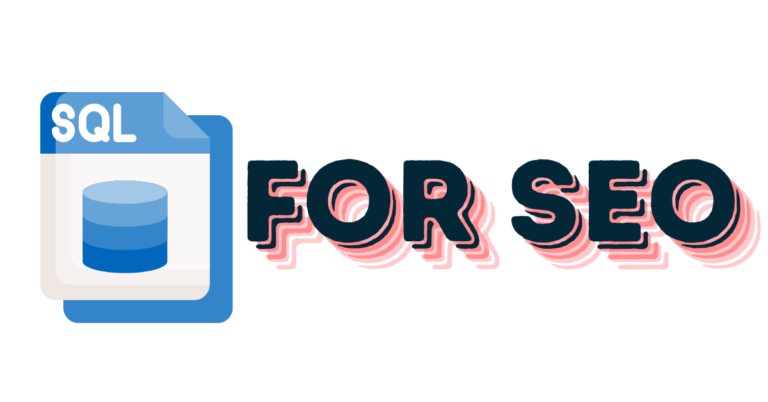Performance Marketing Interview Questions + Answers in 2024
Landing a performance marketing interview often comes after hours of perfecting your resume and networking. Now, with the interview secured, the challenge shifts to proving your worth.
This guide aims to streamline your preparation, helping you avoid common mistakes and highlight your strategic prowess and up-to-date industry knowledge.
Whether you’re an experienced marketer or new to the field, these tips will help you stand out as a knowledgeable and strategic candidate.
What are the Best Performance Marketing Interview Questions Being Asked Right Now?
Our recommended questions stem from topics like the definition of performance marketing, up to managing team dynamics. To fully grasp everything, we urge you to read all of the questions below:
1. What is performance marketing?
This question is asked to assess your fundamental understanding of performance marketing.
Your answer should clearly define performance marketing and emphasize its results-based nature, where success is directly measurable through specific actions such as clicks, conversions, or sales.
Highlighting the accountability and efficiency of performance marketing can also enrich your response.
Example Answer
“Performance marketing is a digital marketing strategy where advertisers pay only when specific actions are completed, such as a sale, a lead generation, or a click.
This approach is highly measurable and accountable, making it popular among businesses seeking clear ROI on their marketing investments.
Key components include real-time tracking, extensive use of analytics, and continuous optimization of advertising efforts to maximize outcomes.”
2. Can you list some common performance marketing channels?
Interviewers ask this to gauge your familiarity with the platforms that drive performance marketing campaigns.
Discuss various digital channels and explain briefly how each can be utilized for targeted advertising efforts.
This shows your practical knowledge and adaptability to multiple platforms essential for performance marketing.
Example Answer
“Common performance marketing channels include search engine marketing (SEM), which targets user queries on platforms like Google and Bing; social media advertising on platforms such as Facebook, Instagram, and Twitter, where targeted ads reach specific demographics; affiliate marketing, where third parties promote your products; and email marketing, which targets users through personalized email communications.
Each channel serves distinct objectives and target audiences, allowing marketers to tailor their strategies accordingly.”
3. What do you understand by the term ‘conversion rate’?
This question tests your grasp of key performance indicators in marketing.
Explain what conversion rate is and why it’s crucial for evaluating the effectiveness of marketing campaigns. Mention how it helps in understanding user behavior and optimizing marketing strategies.
Example Answer
“Conversion rate is the percentage of users who complete a desired action out of the total number of visitors.
For instance, in an e-commerce context, it could be the proportion of website visitors who make a purchase. This metric is vital for assessing the effectiveness of a marketing campaign and providing insights into user engagement and the overall customer journey.
A higher conversion rate indicates more efficient and effective marketing efforts, aligning with business objectives such as sales or lead generation.”
4. How would you explain cost-per-acquisition (CPA)?
Understanding CPA is essential for managing marketing budgets and optimizing campaign costs.
Explain the term clearly and discuss its relevance in performance marketing, particularly in budgeting and strategy formulation.
Example Answer
“Cost-per-acquisition, or CPA, is a financial metric used to measure the total cost of acquiring one paying customer on a campaign or channel level.
It is calculated by dividing the total cost of a campaign by the number of conversions or acquisitions.
This metric helps marketers assess the economic viability of different marketing strategies and channels, ensuring that the cost of acquiring new customers does not exceed the value they bring to the business.”
5. What is retargeting and how is it used in performance marketing?
Retargeting is a powerful tool in digital marketing, used to increase conversions by targeting users who have previously interacted with your brand but did not complete a conversion.
Explain how retargeting works and discuss its effectiveness in improving conversion rates through increased relevance and personalized communication.
Example Answer
“Retargeting, also known as remarketing, involves targeting ads to users who have previously visited your website or used your mobile app but did not make a purchase or complete a desired action.
This is done by placing cookies on the user’s device to track their online behaviors and then serving them targeted ads based on their past interactions with your site.
Retargeting helps in keeping your brand at the forefront of the user’s mind, increasing the likelihood of converting previous visitors into customers by tailoring messages that are relevant to their demonstrated interests.”
6. Can you describe the role of content in performance marketing?
Content is the cornerstone of engaging audiences in performance marketing.
Your answer should emphasize how content drives engagement, leads, and conversions, highlighting its role in educating, informing, or entertaining the target audience to nurture them along the sales funnel.
Example Answer
“In performance marketing, content plays a critical role in attracting and engaging potential customers, acting as the primary tool for communication and conversion.
Effective content addresses the audience’s pain points, provides solutions, and aligns with the customer journey stages, from awareness to decision-making.
Whether through blog posts, videos, or social media updates, content is designed to generate leads, enhance brand visibility, and ultimately drive conversions by delivering value that meets the audience’s needs and encourages them to take action.”
7. What tools have you used for tracking and reporting in performance marketing?
This question assesses your technical proficiency and familiarity with the analytical tools that measure marketing success.
Describe the tools you’ve used, focusing on how they help in tracking key performance indicators, analyzing campaign effectiveness, and generating actionable insights.
Example Answer
“I have utilized several tools for tracking and reporting in performance marketing, including Google Analytics for web analytics, HubSpot for inbound marketing automation, and SEMrush for SEO and competitive analysis.
Additionally, I use AdRoll for retargeting campaigns and Google Ads for pay-per-click campaign management.
These tools provide comprehensive data that helps me track campaign performance, understand user behavior, and measure ROI, enabling continuous optimization of marketing strategies.”
8. How do you ensure your marketing messages comply with brand guidelines?
Ensuring compliance with brand guidelines is crucial for maintaining brand integrity and consistency across all marketing campaigns.
Discuss the processes and checks you use to align marketing messages with the brand’s voice, style, and values.
Example Answer
“To ensure compliance with brand guidelines, I start by thoroughly understanding the brand’s style guide, which includes tone, voice, colors, fonts, and imagery guidelines.
I regularly collaborate with the brand team to stay updated on any changes. Before launching any campaign, I review all content and visuals to ensure they align with these guidelines.
Additionally, I use compliance checklists and approval processes involving multiple stakeholders to guarantee that all marketing messages consistently reflect the brand’s identity and values.”
9. What is an ad network and how does it work?
Understanding ad networks is essential for effectively placing and managing online advertisements.
Explain what an ad network is and how it serves as a mediator between advertisers and websites that host ads, facilitating the buying and selling of ad space.
Example Answer
“An ad network is a platform that connects advertisers to websites that want to host advertisements.
The primary function of an ad network is to aggregate ad space supply from publishers and match it with advertiser demand. This makes it easier for advertisers to find appropriate spaces for their ads across a range of websites without negotiating directly with each publisher.
Ad networks use algorithms to place ads in locations where they are most likely to achieve the advertiser’s goals, such as generating clicks, impressions, or conversions, thereby optimizing the ad spend.”
10. How would you assess a new market for potential performance marketing opportunities?
This question tests your strategic and analytical skills in evaluating new markets.
Discuss how you would conduct market analysis, including researching market size, audience demographics, competitor presence, and potential channels for marketing.
Example Answer
“To assess a new market for performance marketing opportunities, I begin with a thorough market analysis, which includes understanding the demographic and psychographic characteristics of the target audience, analyzing the competitive landscape, and identifying prevalent media consumption habits.
I utilize tools like Google Trends, Statista, and local market research reports to gather relevant data.
Additionally, I conduct surveys or focus groups to gauge consumer behavior and preferences. Based on this information, I develop a tailored performance marketing strategy that leverages the most effective channels and techniques to engage the target audience and achieve high ROI.”
11. How do you determine the most effective marketing channels for a given campaign?
This question tests your strategic thinking and channel evaluation skills.
Highlight how you analyze various factors such as target audience, campaign goals, budget, and past performance data to select the most suitable marketing channels for a campaign.
Example Answer
“To determine the most effective marketing channels, I start by defining the campaign objectives and understanding the target audience’s preferences and behaviors.
I analyze historical data from previous campaigns, considering metrics like reach, engagement, conversion rates, and ROI across different channels.
I also consider the nature of the product or service being marketed and the specific stages of the customer journey we aim to impact.
By integrating this data with current market trends, I can allocate resources to the channels that are most likely to achieve the campaign goals efficiently.”
12. Explain how you would use data analytics to inform marketing strategies.
This question assesses your ability to leverage data for strategic decision-making in marketing.
Describe the types of data you analyze and how these insights guide your strategy development, targeting, and optimization efforts.
Example Answer
“Data analytics is crucial in shaping marketing strategies.
I use it to analyze customer demographics, behavior patterns, and engagement across channels.
Tools like Google Analytics help me track website traffic and user behavior, while CRM systems provide insights into customer lifecycles and purchase histories.
I look for trends and anomalies in the data that indicate opportunities or challenges, and use this information to refine targeting, personalize messaging, and optimize budget allocation.
Continuous A/B testing and performance monitoring allow me to iterate on strategies in real-time, ensuring they remain aligned with business objectives and market dynamics.”
13. What is your approach to managing and optimizing multi-channel marketing campaigns?
Managing multi-channel campaigns can be complex, and this question explores your capability to orchestrate campaigns across various platforms cohesively.
Discuss how you ensure consistency in messaging and optimize performance across channels.
Example Answer
“My approach to managing multi-channel marketing campaigns involves integrated planning and continuous optimization.
I start with a unified strategy that aligns the campaign’s objectives with specific channel roles, ensuring consistent messaging and brand presence across all touchpoints.
I use a central management platform to monitor all channels and gather data on campaign performance, which helps in making informed decisions about reallocations and adjustments.
Regular reviews with cross-functional teams ensure that the campaigns are cohesive and responsive to changes in consumer behavior or market conditions.”
14. Can you discuss a time when you had to adjust your strategy based on analytics insights?
This question looks for practical examples of your adaptability and data-driven decision-making skills. Share a specific instance where analytics led you to pivot your strategy, focusing on the analysis and the outcomes.
Example Answer
“In a previous campaign, while monitoring the analytics, I noticed a significant drop in engagement on one of our primary channels.
Upon deeper analysis, I found that audience interests had shifted, and our content was not resonating as well. I quickly gathered the team to brainstorm and we shifted our content strategy to align more closely with current audience interests, which involved incorporating more video content and interactive posts.
We also adjusted our ad spend to favor platforms where engagement rates remained high. These changes resulted in a 25% increase in engagement within the first month after implementation.”
15. How do you balance investing in tried-and-tested marketing channels and experimenting with new platforms or techniques?
This question assesses your risk management and innovation skills in marketing. Explain how you evaluate the risk and potential rewards of new channels versus established ones and how you make investment decisions.
Example Answer
“I balance the portfolio approach in marketing investments.
Typically, I allocate a majority of the budget—around 70%—to proven channels that consistently deliver strong ROI. The remaining 30% is reserved for experimenting with new platforms and techniques.
This experimental budget is used to test smaller campaigns that, if successful, can be scaled.
I closely monitor performance metrics of these tests, such as engagement and conversion rates, and use rapid iteration to refine our approach. This strategy allows us to capitalize on new opportunities without significantly disrupting the overall marketing efficacy.”
16. Describe a successful performance marketing campaign you managed. What made it successful?
Interviewers ask this question to gauge your hands-on experience and ability to drive successful outcomes. Focus on a specific campaign, discussing the objectives, strategies implemented, and the results achieved.
Highlight your role in planning, execution, and how you measured success, demonstrating your strategic thinking and problem-solving skills.
Example Answer
“I managed a performance marketing campaign for an e-commerce brand aiming to increase holiday sales.
The success hinged on a meticulously targeted approach using Facebook and Google Ads, focusing on high-intent keywords and optimized ad creatives that resonated with our target demographic.
We employed A/B testing extensively to refine our ads and landing pages, which significantly improved conversion rates. By the campaign’s end, we achieved a 50% increase in sales compared to the previous period, exceeding our targets.
The campaign’s success was due to precise targeting, continuous optimization, and effective budget allocation, which allowed us to maximize ROI.”
17. How do you handle attribution modeling in your campaigns?
This question explores your understanding of attribution modeling—a critical aspect of performance marketing that helps in understanding the effectiveness of different marketing touchpoints.
Discuss various attribution models and explain how you select and apply them based on campaign goals and customer journey complexities.
Example Answer
“In my campaigns, I handle attribution modeling by first defining the customer journey and identifying all touchpoints.
Depending on the complexity of the journey and the marketing channels involved, I choose between single-touch models like Last Click for simplicity or multi-touch models like Linear or Time Decay for more comprehensive insights.
For instance, in a multi-channel campaign aimed at driving long-term engagements, I often use the Time Decay model because it assigns more credit to touchpoints closer to conversion, providing a more accurate picture of what drives final decisions.”
18. What challenges have you faced with ad fraud, and how did you address them?
Ad fraud can significantly skew campaign data and drain budgets. This question tests your awareness and problem-solving skills in a real-world challenge.
Describe specific instances of ad fraud you have encountered and detail the strategies you used to identify, prevent, and mitigate its effects.
Example Answer
“One major challenge I faced with ad fraud was during a large-scale PPC campaign, where we noticed unusually high click rates but low conversion rates.
Upon investigation, we discovered patterns indicating click fraud.
To address this, we implemented more sophisticated monitoring tools like ClickCease, adjusted our targeting to exclude suspicious IP addresses, and enhanced our validation processes for ad traffic. We also worked closely with our ad platforms to report fraudulent activities and request refunds where applicable.
These measures helped reduce our exposure to ad fraud and improved the overall efficiency of our ad spend.”
19. Explain the impact of video content in your performance marketing campaigns.
Video content is becoming increasingly important in digital marketing. This question assesses your ability to integrate and measure the effectiveness of video within performance marketing frameworks.
Discuss how you’ve used video content to enhance campaign engagement and results, including any metrics that underscore its impact.
Example Answer
“Video content has been instrumental in our performance marketing campaigns, particularly in driving engagement and conversions.
For example, in a recent campaign aimed at young adults, we introduced short, engaging product demonstration videos on Instagram and YouTube. These platforms are ideal for visual content and allowed us to capture attention quickly.
The videos improved our engagement metrics, with a 40% increase in time spent on our campaign landing pages and a 25% uplift in conversion rates.
By analyzing viewer interaction data, we were able to optimize our video content in real-time, making it a key component of our strategy.”
20. How do you integrate influencer marketing into your performance marketing strategy?
Influencer marketing can amplify your performance marketing efforts by leveraging the trust and reach of influencers. Explain how you identify suitable influencers, align their content with your campaign goals, and measure the effectiveness of these partnerships.
Example Answer
“Integrating influencer marketing involves identifying influencers who align with our brand values and have a genuine connection with their audience.
We start by vetting potential influencers based on their engagement rates, audience demographics, and content style.
Once selected, we collaborate with them to create authentic content that incorporates our products in a way that resonates with their followers.
We track campaign performance through dedicated promo codes and affiliate links, allowing us to measure direct sales and engagement metrics resulting from influencer activities.
This approach ensures that our influencer partnerships are not only authentic but also deliver measurable results that align with our broader performance marketing objectives.”
21. Discuss the role of machine learning and AI in optimizing performance marketing campaigns.
This question assesses your understanding of modern technological advancements in marketing. Explain how machine learning and AI enhance campaign efficiency through predictive analytics, automation, and personalization, and provide examples to illustrate these points.
Example Answer
“Machine learning and AI significantly enhance performance marketing by automating data analysis and decision-making processes, enabling more personalized and efficient campaigns.
These technologies analyze vast amounts of data to identify patterns and predict user behavior, which helps in targeting ads more effectively.
For example, AI can automatically adjust bidding strategies in real-time based on conversion likelihood, maximizing ROI.
Additionally, machine learning algorithms are used to personalize content, ensuring that messages are tailored to individual preferences, which increases engagement and conversion rates.”
22. How do you forecast budget needs for scaling a successful campaign internationally?
Forecasting budget needs for international campaigns tests your strategic planning and market analysis skills. Describe the factors you consider, such as market size, competitive landscape, and local consumer behavior, and explain how you use data to make informed budgeting decisions.
Example Answer
“When forecasting budget needs for scaling internationally, I start by analyzing the specific market dynamics of each target country, including consumer purchasing behavior, digital adoption rates, and local competition.
I also review the performance data from similar campaigns in similar markets to estimate initial costs and potential ROI.
This involves adjusting for factors like media costs, which can vary significantly between regions.
Additionally, I consider legal and logistical costs associated with entering a new market, ensuring we allocate sufficient resources to meet these needs while optimizing for cost-efficiency.”
23. What metrics do you prioritize when evaluating the ROI of performance marketing efforts?
This question explores your analytical skills and understanding of key performance indicators (KPIs) in marketing. Discuss the specific metrics you focus on to assess campaign success and justify why these metrics are critical.
Example Answer
“When evaluating the ROI of performance marketing efforts, I prioritize metrics such as cost per acquisition (CPA), return on ad spend (ROAS), conversion rate, and customer lifetime value (LTV).
CPA helps assess the cost-effectiveness of acquiring new customers, while ROAS measures the direct return on the marketing spend.
Conversion rate provides insight into the effectiveness of the campaign in persuading users to take a desired action.
Lastly, LTV allows us to understand the long-term value of customers acquired through our campaigns, which is crucial for assessing the overall profitability and sustainability of our marketing efforts.”
24. Explain how customer segmentation enhances performance marketing strategies.
Customer segmentation is fundamental to targeted marketing. Explain how segmenting your audience can lead to more personalized marketing efforts and better campaign outcomes.
Example Answer
“Customer segmentation enhances performance marketing strategies by allowing us to tailor our messaging and offers to specific groups based on their characteristics and behaviors.
By dividing our audience into distinct segments—such as by demographic, psychographic, or purchase history—we can create more relevant and engaging content.
This relevance increases the likelihood of conversion and customer retention.
For example, targeting users based on their previous interactions with our brand can lead to higher engagement rates, as the content is more aligned with their interests and needs.”
25. How do you ensure compliance with data privacy laws in performance marketing campaigns?
Compliance with data privacy laws is crucial to maintaining trust and legality in marketing practices. Describe the steps you take to ensure your campaigns comply with regulations like GDPR and CCPA.
Example Answer
“Ensuring compliance with data privacy laws starts with a thorough understanding of the regulations applicable in each market we operate in, such as GDPR in Europe and CCPA in California.
I work closely with legal and data teams to ensure our data collection, storage, and processing practices meet these standards.
This includes obtaining explicit consent from users before collecting their data, providing clear privacy notices, and implementing robust data security measures.
Additionally, I ensure that all third-party vendors handling data on our behalf also comply with these laws, frequently reviewing and updating our policies and practices to remain compliant as laws evolve.”
26. Discuss the impact of blockchain technology on performance marketing.
This question explores your knowledge of emerging technologies and their applications in marketing. Explain how blockchain technology can enhance transparency, security, and efficiency in performance marketing campaigns.
Example Answer
“Blockchain technology is poised to revolutionize performance marketing by enhancing transparency and trust between advertisers and publishers.
By using blockchain, every transaction between parties—whether it’s an ad impression, click, or conversion—can be recorded on a decentralized ledger. This makes the data immutable and transparent, reducing the chances of fraud and discrepancies in reporting.
Additionally, blockchain can facilitate smart contracts that automatically execute payments once certain agreed-upon conditions are met, streamlining the payment process and reducing disputes.”
27. What are the ethical considerations in performance marketing, and how do you address them?
Ethical marketing is crucial to maintain trust and compliance. Discuss the common ethical challenges in performance marketing such as consumer privacy, data manipulation, and transparency, and how you address these issues.
Example Answer
“Ethical considerations in performance marketing primarily revolve around consumer privacy, transparency, and honesty in advertising.
To address these, I ensure that all data collection and targeting practices comply with relevant laws and ethical standards, obtaining explicit consent where necessary. I also strive for transparency in how data is used and ensure that all advertisements are clear, truthful, and not misleading.
Furthermore, I advocate for ethical practices within the team and with stakeholders, promoting a culture of integrity and respect for consumer rights.”
28. How do you leverage predictive analytics in your campaign strategies?
Predictive analytics can significantly optimize marketing efforts. Explain how you use predictive models to forecast outcomes, personalize marketing efforts, and enhance decision-making.
Example Answer
“I leverage predictive analytics by using historical data and machine learning algorithms to forecast future consumer behaviors and campaign outcomes.
This involves analyzing past campaign data and consumer interactions to identify patterns and trends. These insights allow us to predict which types of content, product offers, and marketing messages are most likely to resonate with different segments of our audience.
By integrating these predictions into our campaign strategies, we can personalize our efforts to better meet consumer needs and likely see higher engagement and conversion rates.”
29. Discuss a case where a campaign did not meet its objectives. What lessons did you learn?
This question tests your ability to learn from failures and adapt. Share a specific example where a campaign fell short of its goals, the analysis you conducted to understand why, and the lessons you learned.
Example Answer
“In a past campaign aimed at driving app downloads through social media ads, we fell short of our targets. Post-campaign analysis revealed that our audience targeting was too broad, which diluted the impact of our ads.
The creative used also did not resonate well with our core demographic. From this, I learned the importance of precise targeting and the need for continuous A/B testing of creatives during the campaign rather than settling for initial designs.
These insights have guided subsequent campaigns, leading to better-targeted efforts and more engaging creatives, significantly improving performance.”
30. How do you manage team dynamics when leading a performance marketing group?
This question assesses your leadership and team management skills. Describe your approach to fostering a collaborative environment, resolving conflicts, and motivating team members to achieve common goals.
Example Answer
“Managing team dynamics effectively is crucial for maintaining a productive work environment.
I focus on clear communication, setting shared goals, and recognizing individual and team contributions. I encourage open dialogue to foster an environment where team members can voice their ideas and concerns without fear of judgment.
For conflicts, I promote a resolution approach that focuses on understanding differing perspectives and finding common ground.
Regular team-building activities and training sessions also help in strengthening bonds and ensuring everyone is aligned with the latest industry practices and team objectives.”
How to Prepare for a Performance Marketing Interview
Getting ready for a performance marketing interview is all about mixing a solid grasp of the latest industry trends with some strategic smarts and showing off your relevant skills and experiences. Here are my top 5 tips to help you nail it:
Research the Company and Its Marketing Strategies
Take some time before your interview to really dive into what the company does.
Learn about their business model, who they target, the marketing channels they love, and what they’ve been up to lately. Get familiar with their brand voice, the main products, and where they stand in the market.
This isn’t just about impressing them—it’s about showing you’ve done your homework and are seriously keen on making a real contribution.
Brush Up on Key Performance Marketing Tools and Metrics
Make sure you can chat confidently about the digital marketing tools and platforms you’re good with, like Google Analytics, Facebook Ad Manager, SEMrush, or HubSpot. Know the metrics that matter in performance marketing—things like Cost Per Acquisition (CPA), Return on Ad Spend (ROAS), and conversion rates are biggies. Also, be ready to share stories about how you’ve used these tools in your past gigs, especially with things like SEO or content marketing.
Practice with the STAR Method
When it comes to those tricky behavioral interview questions, the STAR method (Situation, Task, Action, Result) is your best friend.
It helps you tell clear and concise stories about your past work. Basically, you’ll want to paint a picture of the challenges you faced, what you did about them, and what the results were.
Get some practice in so these stories come out smooth and natural during your interview.
Understand and Discuss Compliance and Ethical Marketing
Be ready to get into how you handle data privacy and follow laws like GDPR and CCPA in your campaigns.
Performance marketing can be a minefield ethically, especially around how consumer data is handled. Showing that you’re not just effective but also trustworthy and ethical can really help you stand out.
Prepare Questions for the Interviewer
Almost every interview wraps up with that classic “Any questions?” moment. Have some thoughtful ones ready that show you’re seriously considering how you’d fit into the company.
Ask about how the team works together, what they count as a success, or what new marketing projects they have on the horizon.
It’s a great way to show you’re already thinking about how you can help them succeed, plus it gives you a peek into what working there might be like.
By keeping these tips in mind, you’ll be well-prepared to show off your performance marketing chops and fit with the company’s culture and goals.
Conclusion
Juan Remote Work aims to help you ace your next interview as a performance marketer.
If you want to explore more topics from us, consider browsing through our blog where we’ve covered topics like ‘Web Designer Interview Questions,’ ‘What is SEO Attribution,’ and much more.
Also, check out our interview questions section for other related topics.
With that said, we hope we’ve covered what you were looking for. Take care!
FAQs
What are common mistakes to avoid during a performance marketing interview?
It’s easy to trip up during a performance marketing interview if you’re not prepared. Make sure you’re up to speed with the latest marketing tools and platforms—this is a must. It’s also super important to bring specific examples of past campaigns you’ve worked on; just talking theory won’t cut it. Be precise about what you did, what worked, and even what didn’t, using actual data to back up your points. Remember, vague answers are a no-go. Dive deep into the details to really show what you know and how you’ve applied it.
How can I demonstrate my knowledge of industry trends during the interview?
To show off your industry savvy, keep a steady diet of the latest from top marketing publications like Adweek or Marketing Land. Webinars and industry forums? Get involved. When you’re in the interview, don’t just regurgitate facts. Discuss recent updates—like changes to Google’s algorithms or new platforms that are gaining traction—and share your take on how these could influence strategies moving forward. This not only shows you’re in tune with the industry but also that you’re thinking critically about its evolution.
What should I include in my portfolio for a performance marketing interview?
Pack your portfolio with a variety of successful campaigns that highlight your strategic finesse across different channels. Got a killer email campaign that smashed ROI expectations? Put it in there. How about a PPC or social media strategy that led to a significant uptick in engagement? Those are gold. Make sure each case study in your portfolio includes clear, measurable outcomes—think engagement rates, conversion boosts, and any other metrics that prove your campaigns hit the mark.
How important is data privacy knowledge for a performance marketing role?
Understanding data privacy is non-negotiable, especially with heavy-hitters like GDPR and CCPA on the books. In your interview, talk about how you’ve navigated these regulations in past campaigns. Maybe share a specific instance where you adjusted a campaign to align with new data protection laws. Showing that you can handle consumer data ethically and legally is crucial—it reassures your potential employer that you’re not just effective but also compliant and trustworthy.
Can soft skills impact my performance in a marketing interview?
Absolutely, soft skills can make or break your interview. Sure, knowing your stuff is crucial, but being able to communicate effectively, work well with others, and solve problems on the fly is just as important. You might get asked about times when these skills came into play—maybe coordinating a project across different teams or handling a tricky client situation. Highlight examples where your soft skills led to successful outcomes or where they helped you navigate challenging scenarios. This shows you’re not just a skilled marketer but also a well-rounded professional.







